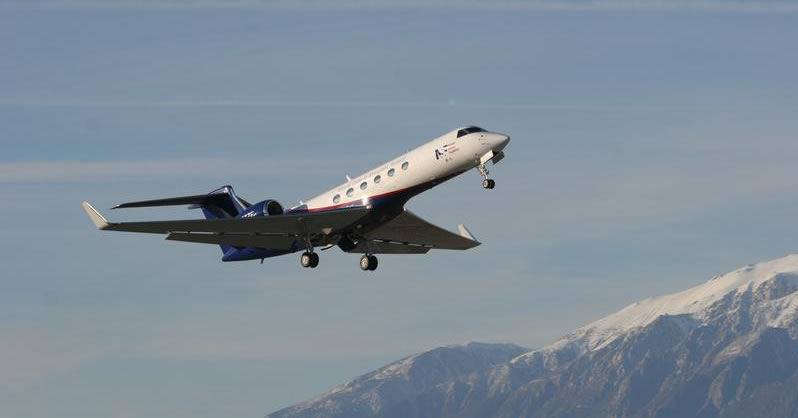NSF/NCAR HIAPER Gulfstream GV
Aircraft Overview
The NSF/NCAR High-performance Instrumented Airborne Platform for Environmental Research (HIAPER) aircraft is the preeminent airborne research platform for scientists and researchers in several disciplines. HIAPER has demonstrated success in collecting data required to meet a broad range of scientific studies and objectives, including air quality and chemistry; chemical composition and transport within the atmosphere; effects of the chemical process on climate change; atmospheric dynamics and thermodynamics on the synoptic and mesoscales; cloud properties and processes; atmospheric predictability; geological surveys; and electrification of the atmosphere.
In support of university-driven observational field campaigns, HIAPER is maintained and operated on behalf of the National Science Foundation by the National Center for Atmospheric Research. HIAPER is based in Broomfield, Colorado, USA, and is managed by EOL’s Research Aviation Facility (RAF).
Scientific Capabilities

The aircraft's flight characteristics, plus the ability to carry 5,600 pounds (2,540 kilograms) of sensors, make the HIAPER GV a versatile airborne laboratory for scientific discovery. Scientists are able to bring a whole suite of instruments to the upper edges of hurricanes, thunderstorms, and other storms, offering unprecedented new details for studying these powerful storms. The aircraft enables researchers to study critical chemical processes from the Earth's surface to the stratosphere, often in remote locations. These types of data are often essential for understanding environmental changes, for example, from air pollution. The HIAPER GV has also supported remote sensing measurements in remote locations that played a crucial role in the calibration and validation of satellite instruments.
Instrumentation
Each HIAPER GV payload is customized to meet the scientific objectives and research goals of a specific mission. NCAR, in conjunction with university groups and private industry, has developed and maintained a suite of highly-capable airborne instruments known as the HIAPER Airborne Instrumentation Solicitation (HAIS).
In addition to the HAIS instrumentation, NCAR offers in-situ, remote sensing, and expendable instruments to be deployed from HIAPER. Typical payloads for scientific missions include a combination of these instruments with other instruments provided and operated by investigators from universities, other government organizations, and private companies. These instruments must comply with mechanical, structural, electrical, and flammability requirements. NCAR works closely with instrument investigators to assist with payload certification and integration, and NCAR maintains a Design and Fabrication Services facility capable of manufacturing airborne instruments and interface hardware.
When referencing the NSF/NCAR GV HIAPER Aircraft in publications or proposals, please use the identifier 10.5065/D6DR2SJP -- for example as a citation:
UCAR/NCAR - Earth Observing Laboratory. (2005). NSF/NCAR GV HIAPER Aircraft. UCAR/NCAR - Earth Observing Laboratory. https://doi.org/10.5065/D6DR2SJP Retrieved December 14, 2016
Please be careful of line breaks when cutting and pasting the above text, and feel free to reformat to fit your document. Additional citation styles are available at DataCite or CrossCite.